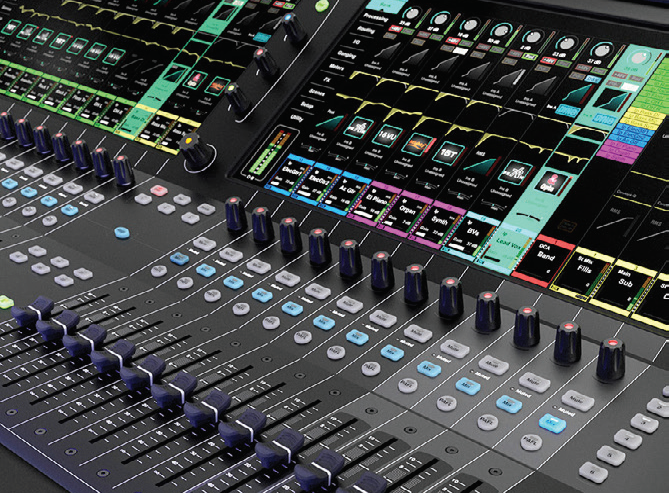
VCAs
When I first mixed on a console with VCAs I thought, “This is awesome! I never have to use groups again!” I was right. And I was wrong. The truth is VCAs and Groups, while they can be used to the same effect, are really two different animals, and both have their applications.
VCA is an abbreviation for Voltage Controlled Amplifier. Without getting super-technical, think of a VCA as a remote control for your fader. That might not seem very useful at first, considering you already have the fader right there. Where it gets fun is that you can assign multiple channels to a VCA, and you can assign a channel to multiple VCAs. More on that later.
Here’s how a VCA works (at least functionally – look it up if you want to know how they work electrically): Let’s say you have the lead vocal – Channel 1 – assigned to VCA 1. And let’s say Channel 1 is sitting at Unity level (sometimes known as 0 dB).
The fader is not adding or subtracting gain from the signal. If VCA 1 is also at Unity, there is no gain change. But turn VCA 1 down to -10 dB, and the signal on Channel 1 drops 10 dB, even though the fader hasn’t moved. Move the fader down to -10 dB, and the signal is now down to -20 dB. If you leave the fader at -10dB, and put the VCA back to 0 dB, the signal is at -10 dB. Push the VCA up to +10dB, and the signal is back to 0 dB.
Digital consoles call these faders DCAs (for Digitally Controlled Amplifiers). No matter, they basically do the same thing. The important thing to remember is that VCAs aren’t better than groups; they’re different. I use both – to very different effects – every week. Given the choice, I would always have a healthy supply of both Groups and VCAs on my consoles (which is one reason I really like mixing on DiGiCo consoles).
Matrix Mixes
The modern matrix mix can be a confusing beast. Back in the days of analog consoles, the matrix operated much as aux mixes do, but instead of being fed by individual channels, they were fed by groups. Thus, to create a matrix mix, you would assign your channels to groups, then build a matrix mix from your groups (including the L&R mix).
Some mixers provided few matrix mixes, others offered a lot. Matrix mixes are defined by how many inputs and outputs they have; to wit, a 16 × 12 matrix has 12 individual mixes being fed by 16 sources. On an analog desk, this would probably mean the console has 14 auxes plus L&R, and you can create 12 mixes of those groups.
With the advent of digital consoles, there’s no real reason why individual channels can’t also be fed into the matrix mixes. Some companies treat their matrixes like auxes (Yamaha, for example). You can assign any or all channels to a matrix mix and use it just like another aux. The difference is that you can also assign auxes or the L&R mix to the matrix, so it’s really a hybrid.
Other digital consoles let you assign groups to the matrix, plus a limited number of input channels. Still, others let you pick a fixed number (say 16) of whatever inputs you want – input channels, auxes, groups, L&R – and mix them into 12 or so mixes.
Matrix mixes can seem confusing, but they make much more sense as you work with them. For now, know that they’re incredibly useful for feeding ancillary rooms or destinations (recording, for example), or even running your main PA (depending on the complexity of the system).
